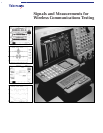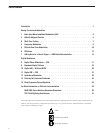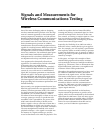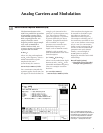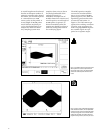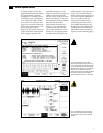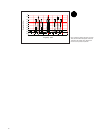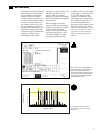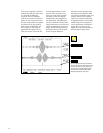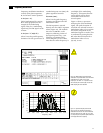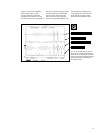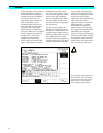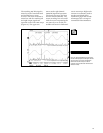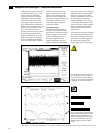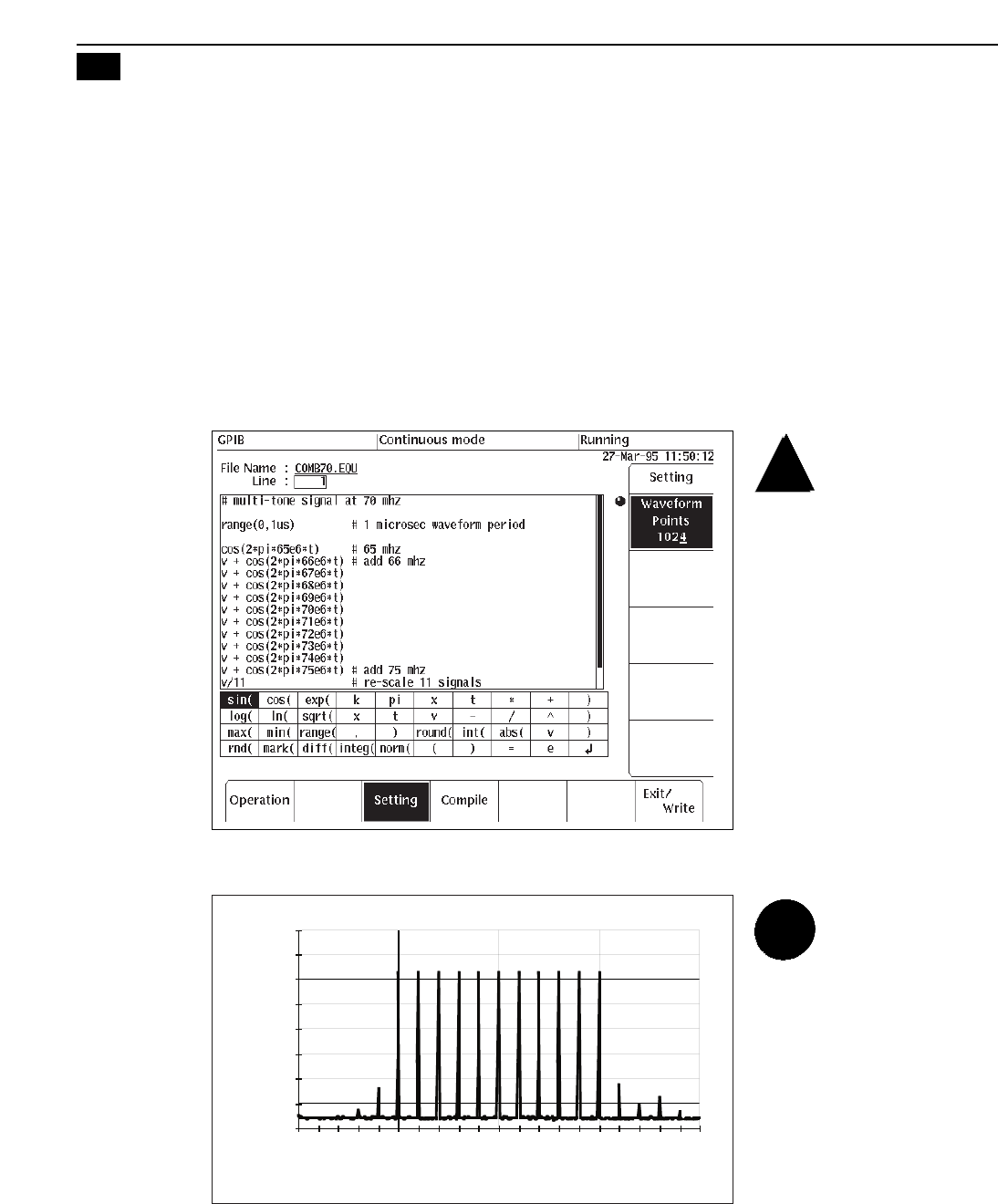
9
Multi-Tone Testing
3
The logical extension of adjacent
carrier testing is multi-tone test-
ing. In addition to simulating
multiple carriers in a multi-
channel system, multi-tones can
quickly test filter response when
a scalar or network analyzer is
not available, or they can iden-
tify intermodulation products
resulting from saturation or non-
linearities in supposedly linear
component stages. Traditionally,
multi-tone testing requires
assembling as many signal
generators as desired tones. And
while the generators can be
phase-locked to a common
reference, the phase relationship
between the independent signals
is not absolute.
When creating a multi-tone
using an AWG, the relationship
between carrier phase is implicit
in the multi-tone equation.
Figure 7 shows the AWG equa-
tion editor specifying 11 tones
centered at 70 MHz in 1 MHz
steps (from 65 MHz through
75 MHz). In this case, the 1 MHz
steps suggest a waveform period
of 1 µs such that the record
repeats at a 1 MHz rate. Thus,
the 65 MHz tone is generated by
65 complete cycles in the 1 µs
record. The 66 MHz tone is
generated by 66 complete cycles
in the record and so on. Thus,
when the record repeats,
all the
tones are continuous in phase. A
spectrum analyzer plot of the
multi-tone signal is shown in
Figure 8.
Figure 7. Eleven tones are added together. The
record length of 1024 points and a waveform
period of 1 µs requires a sample rate of
1.024 GHz. All the tones are in-phase such that
the maximum value of the multi-tone occurs at
t=0 (the beginning of the record) when all the
cosine terms have a value of 1.
Frequency (MHz
-80
-70
-60
-50
-40
-30
-20
-10
0
60 65 70 75 80
Figure 8. Spectrum analyzer plot of the 11
carriers. The tone levels were flat to better
than 0.25 dB.
Magnitude (dBm)



